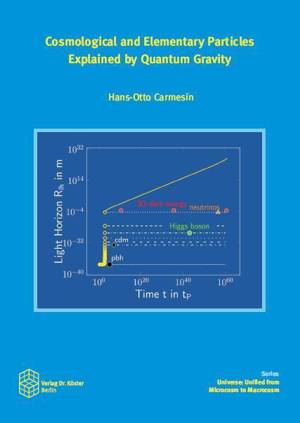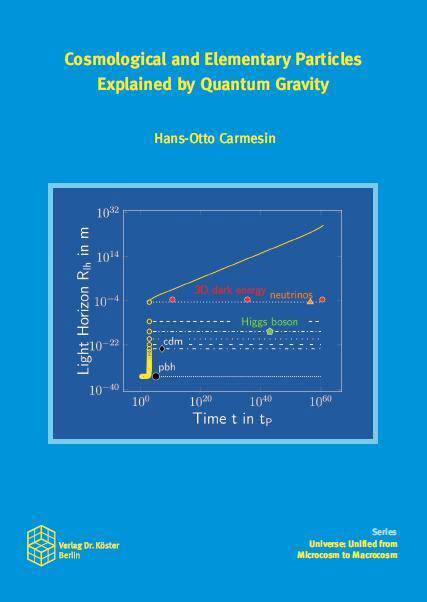
- Retrait gratuit dans votre magasin Club
- 7.000.000 titres dans notre catalogue
- Payer en toute sécurité
- Toujours un magasin près de chez vous
- Retrait gratuit dans votre magasin Club
- 7.000.000 titres dans notre catalogue
- Payer en toute sécurité
- Toujours un magasin près de chez vous
Cosmological and Elementary Particles Explained by Quantum Gravity
Hans-Otto Carmesin
19,95 €
+ 39 points
Description
The universe ranges from huge galaxies near the light horizon at a distance of 4.1 1026 m, via elementary particles at a hierarchy of scales, towards smallest objects at the Planck scale at lengths of 1.6 10-35 m. How did these very different objects form and develop? We present an answer by deriving a physically founded and critically tested unified theory of cosmological and elementary particles.Details: Based on quantum gravity, I derived a series of novel results about cosmology, general relativity and particle physics. Here we extend these findings in an essential manner:The space within the present light horizon started from a quantum at zero-point energy at the Planck scale and at dimension 301. Then it experienced a series of dimensional phase transitions, before it became three dimensional. An increasing number of these quanta formed our usual space and expanded it towards the present day light horizon. So, space is formed by the dark energy and its quanta. These basic cosmological particles are modeled here in detail. The dimensional phase transitions of the early universe provide the quanta that form the masses of all present day elementary particles including neutrinos, Higgs bosons, quarks, electrons, myons, tauons and W+,0, bosons. In the same manner, we derive novel elementary particles to be discovered in the future.We derive all results from quantum physics and gravity. Thereby we use only five numerical inputs: the Hubble constant H0 as a reference for the present time after the Big Bang as well as the universal constants G, c, kB and h. Our results include the energies and masses of the above cosmological and elementary particles and the remaining five cosmological constants of the standard model of cosmology. All results are in precise accordance with observation.In this book we derive all findings in a systematic, clear and smooth manner. We summarize our results and innovations by many definitions, propositions and theorems. So, we solve many fundamental problems of physics including the hierarchy problem of elementary particle physics, in particular.We are classes from grade 10 or higher, courses, research clubs, enthusiasts, observers, experimentalists, mathematicians, natural scientists, researchers ...
Spécifications
Parties prenantes
- Auteur(s) :
- Editeur:
Contenu
- Nombre de pages :
- 204
- Langue:
- Anglais
- Collection :
- Tome:
- n° 5
Caractéristiques
- EAN:
- 9783968310183
- Format:
- Livre broché
- Dimensions :
- 148 mm x 210 mm







